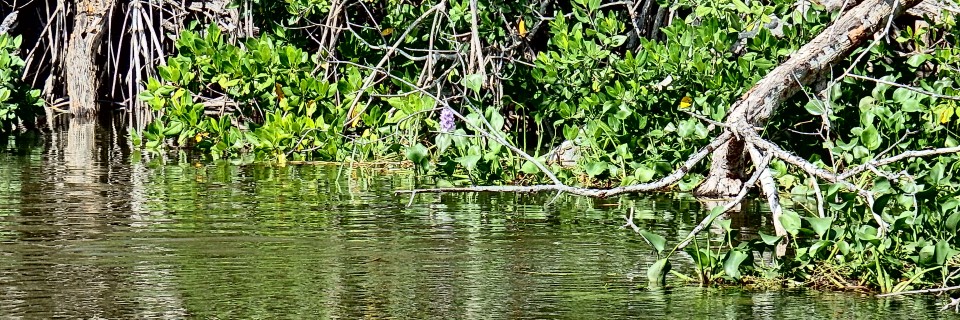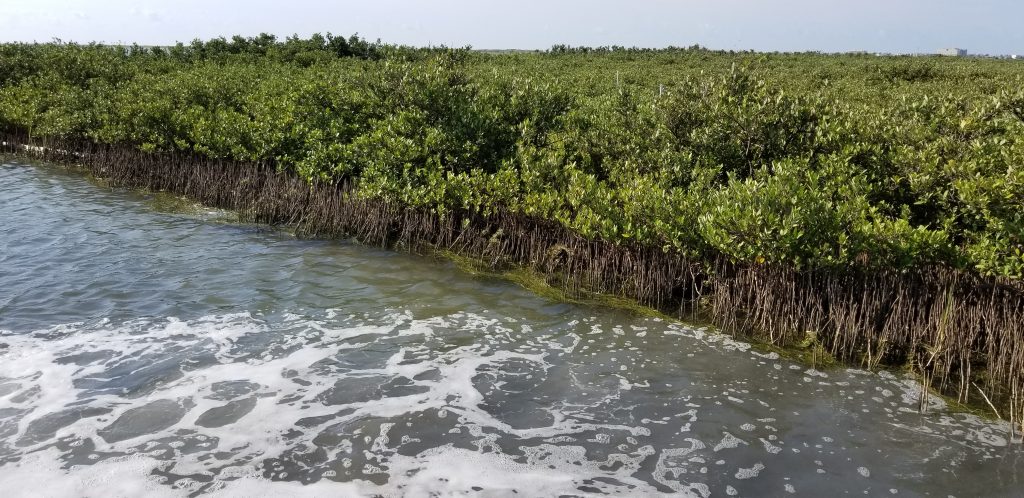Ecohydrology at the University of Texas at Austin
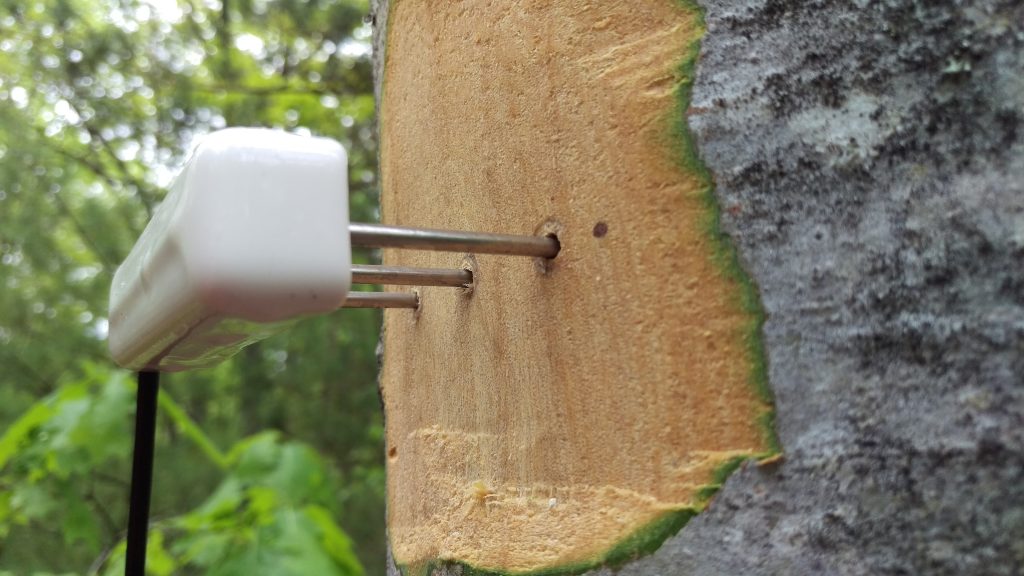
The Matheny lab seeks to better understand the role vegetation plays in land-atmosphere exchange. We focus on measurement and modeling of the interactions and hydrologic feedbacks between the subsurface, the biosphere, and the atmosphere with a specific emphasis on the ways vegetation influences these fluxes. We study the physical and mechanistic processes that govern water movement along the soil-plant-atmosphere continuum through a combination of field measurement campaigns and cutting-edge model development from individual plants to landscape scale models of biosphere-atmosphere exchange.
News from the Matheny Lab:
Spring 2022:
Matheny honored to receive the American Meteorological Society’s Outstanding Early Career Award in Agricultural and Forest Meteorology for “For leadership and excellence in the study of vegetation hydrodynamics and its role in the surface – atmosphere exchange of water”
Big congratulations all around:
This spring, we celebrate Maria Ulatowski passing her PhD qualifying exam and Lily Beaman and Jack McLaughlin finishing outstanding master’s theses.
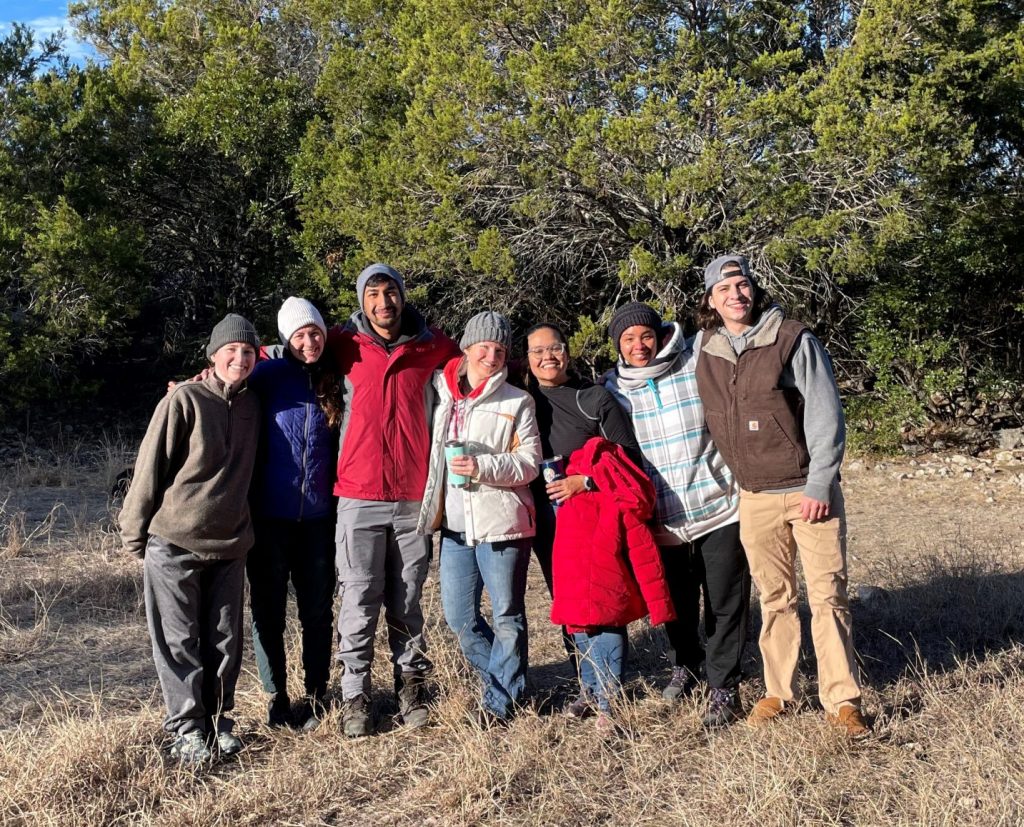
Matheny Lab at the Rocksprings, Texas field site. From left to right: Lily Beaman (MS), Maria Ulatowski (PhD), Suvan Cabraal (PhD), Ashley Matheny, Ana Maria Restrepo Acevedo (PhD), Myriam Loving (MS), Jack McLaughlin (MS)
From land to sea: an assessment of pollution impacts on coastal ecosystems in Jamaica
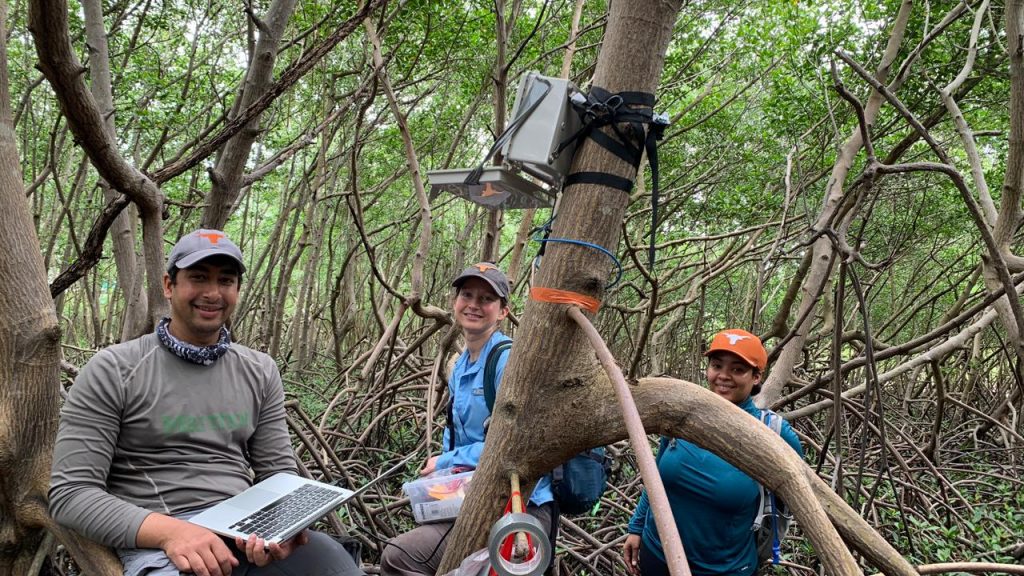
Cabraal, Matheny, and Loving (left to right) install a LEAF logger (see article below) in the mangrove swamps near the Alligator Head Foundation in Portland, Jamaica. This logger will record air temperature, humidity, pressure, sap flux, and precipitation automatically to allow us to track our trees’ response to changing water chemistry and environmental conditions.
Matheny and Dr. Rowan Martindale were awarded a $10,000 Texas Global Seed Grant to support master’s student Myriam Loving’s research on mangrove impacts and interactions with water quality in Jamaica! Mangrove forests and coral reefs are vital and complex ecosystems. Together these ecosystems
protect coastlines from erosion and storm surges; are diverse habitats for fish and invertebrates;
are perform important roles in carbon, nutrient, and toxin cycling between the land and the sea. Yet, both mangroves and coral reefs are highly vulnerable to disturbances including climate change, sea level rise, increases in sea surface and air temperatures, precipitation variability, changes in ocean chemistry, and human development along coastlines. We are studying mangroves’ ability to improve water quality and their potential to improve the health of nearby coral reefs. We will work jointly with the University of the West Indies (UWI) and the Alligator Head Foundation to analyze two sites with similar ecosystem progressions (mangroves – sea grass– coral reefs) on the north coast of Jamaica: one at the outflow of a major sewage treatment plant and one in a nationally protected ecological sanctuary.
Matheny honored to receive prestigious NSF CAREER Award
Matheny Awarded NSF CAREER Grant to Research Water Storage in Trees Building on the idea that trees act as a “ water towers” that can store water in the environment, Ashley Matheny, an assistant professor in the Department of Geological Sciences at The University of Texas at Austin, secured a prestigious grant from the National Science Foundation’s Faculty Early Career Development Program. This award, known as a CAREER grant, provides five years of funding to help early-career faculty establish a strong research and educational program that leads to a lifetime of leadership in in their field.
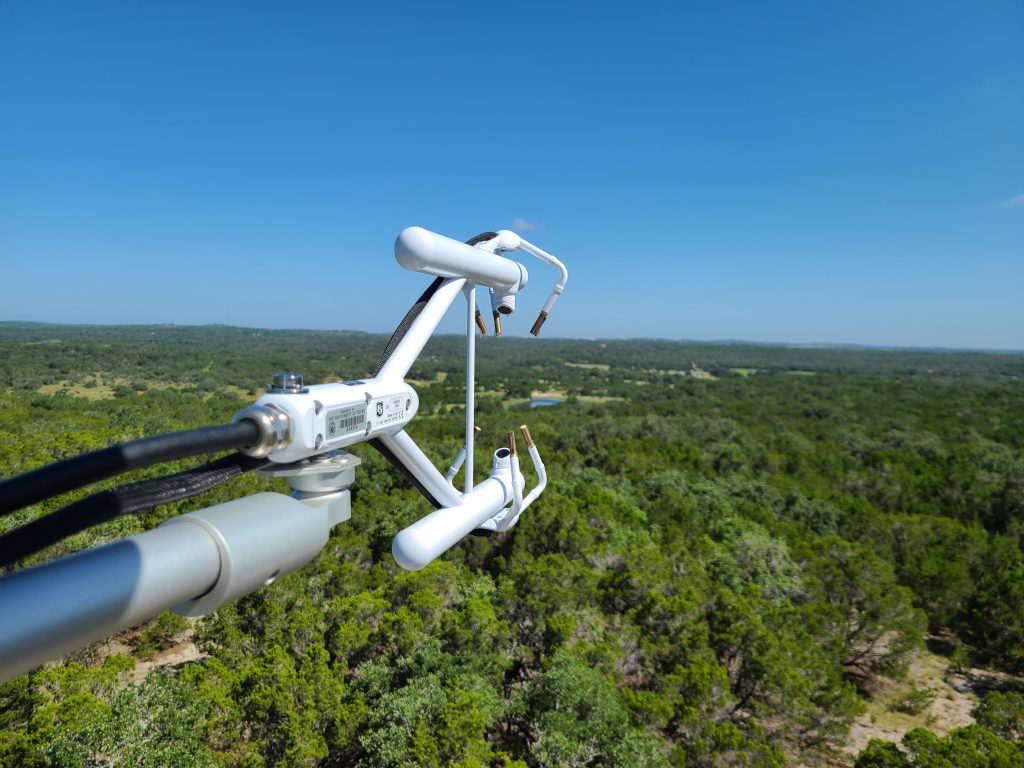
“This CAREER grant is well deserved recognition to conduct high impact, integrative research that advances science in support of a critical societal issue of understanding and managing water stress in our landscapes. It is also an award, to celebrate the innovative, measurements and modeling integration pathway that Ashley has boldly undertaken to blend in field research, lab studies, classroom education, and societal applications- a signature of what successful faculty do at Jackson School of Geosciences and the University of Texas at Austin”. Says Dr. Dev Niyogi
Matheny’s research will create novel sensors to directly measure water content at different depths when inserted in trees. She is collaborating with a colleague, Pete Marchetto (of Conservify), who is already constructing a prototype that measures the lateral transport of water in a tree—something that is poorly understood since water movement is typically observed vertically from roots to stems. Once data is collected with the new technology, the direct measurement of water content in trees will be compared with models that have been developed at Jackson School and remote sensing data from NASA satellite products to understand water content in forests . This integration of data, models, and satellite products will lead to more meaningful analyses and estimates of moisture and will help scientists and managers better predict droughts, tree mortality, and the likelihood of forest fires. Matheny will also develop computer models that simulate how water storage impacts both the water and carbon cycles. “I am excited about this project, and to help discover a more complete picture of how plants use water,” said Matheny. “Our hypothesis is that defunct vessels in trees retain water, even if they are not actively transporting it, and can act as a backup or storage unit for the tree when it is water-limited.” Matheny plans to measure water content in two contrasting North American forest types: a temperate, deciduous forest of red oak, white pine, and red maple common of Michigan’s deep sandy soils, and a semi-arid evergreen forest of Ashe juniper and live oak rooted in the rocky limestone landscape of central Texas.
The CAREER grant also has a strong educational component and provides resources to work with collaborators at Arizona State University to create immersive videos that provide essentially remote “field experiences” for college and AP high school students throughout Texas. These videos, which will have versions in Spanish and English, will take students to the White Center, to the field site in Michigan, and to an additional research site at the UT Marine Science Institute in Port Aransas, Texas that showcases mangrove forests. “These virtual field trips should increase inclusivity through student access to the geosciences,” said Matheny. “This grant will give us a great start after COVID-19 and the new world we are adapting to with online education. I want the kids to see the exciting world they can discover studying the earth sciences!”
Exploring Mangrove Forest Dynamics at the Terrestrial-Aquatic Interface
Our team has been awarded a pair of grants from the U.S. Department of Energy and the Australian Research Council to study how mangrove ecosystems in Texas, Australia, Panama, and Abu Dhabi respond to changes in salinity and atmospheric conditions. We are thrilled to add four new vegetation hydraulics and eddy covariance sites to our monitoring network! Read more about this project here: Halophyte Hydrodynamics
We are thrilled to be collaborating on this project with Chonggang Xu (Los Alamos National Lab), Matteo Detto (Princeton University), Annalisa Molini (Kalifa University), Timothy Shanahan (University of Texas), Edoardo Daly (Monash University), and Ruth Reef (Monash University).
New within-canopy monitoring system opens up new opportunities to study ecohydrologic processes in remote as well as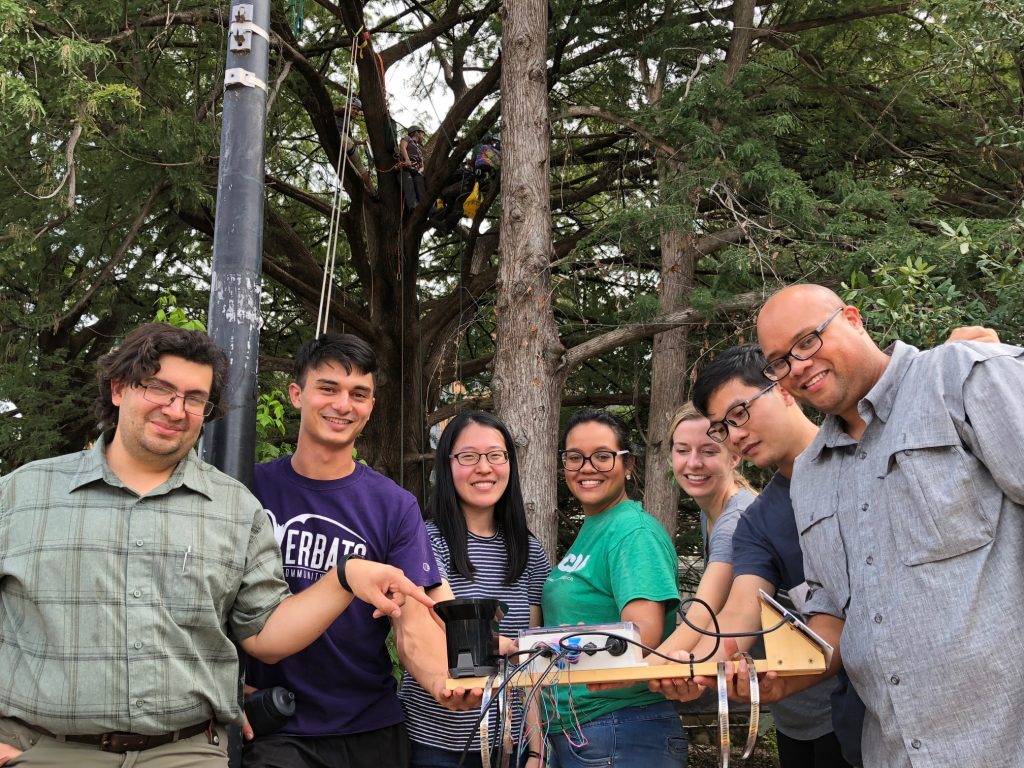 densely populated locations
densely populated locations
by Ashley Matheny, Peter Marchetto, Jaime Powell, Austin Rechner, Joon-Ye Chuah, Erica McCormick, and Suzanne Pierce
The fields of meteorology, surface- and groundwater hydrology, and forestry are often decoupled despite the fact that they occur simultaneously at the intersection of living systems and the physical environment. In this work, we describe a system that allows concurrent measurement of canopy throughfall, transpiration, air temperature, pressure and humidity at multiple heights, in
addition to soil moisture and several surface water parameters. LEAF is designed to be generalizable to many other hydrology and meteorology applications, and is modular such that it is easily adaptable for use with additional, diverse environmental monitoring sensors. This low-cost, light-weight, solar powered system is capable of simultaneous streaming telemetry as well as local data logging via SD card.
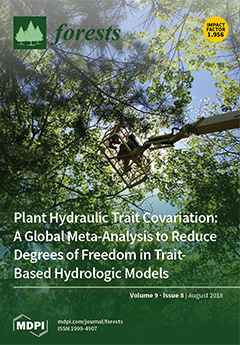
Undergraduate researchers in the Matheny lab find trait-coordination that can be used to describe hydraulic strategies of different types of vegetation.
Plant hydraulic trait covariation: a global meta-analysis to reduce degrees of freedom in trait-based hydrologic models
by Rio Mursinna, Erica McCormick, Katie Van Horn, Lisa Sartin, and Ashley Matheny
Current vegetation modeling strategies use broad categorizations of plants to estimate transpiration and biomass functions. A significant source of model error stems from vegetation categorizations that are mostly taxonomical with no basis in plant hydraulic strategy and response to changing environmental conditions. Here, we compile hydraulic traits from 355 species around the world to determine trait covariations in order to represent hydraulic strategies.Multiple regression analysis revealed 3D trait spaces and tradeoff axes along which species’ hydraulic strategies can be analyzed. These numerical trait spaces can reduce the necessary input to and parameterization of plant hydraulics modules, while increasing the physical representativeness of such simulations.
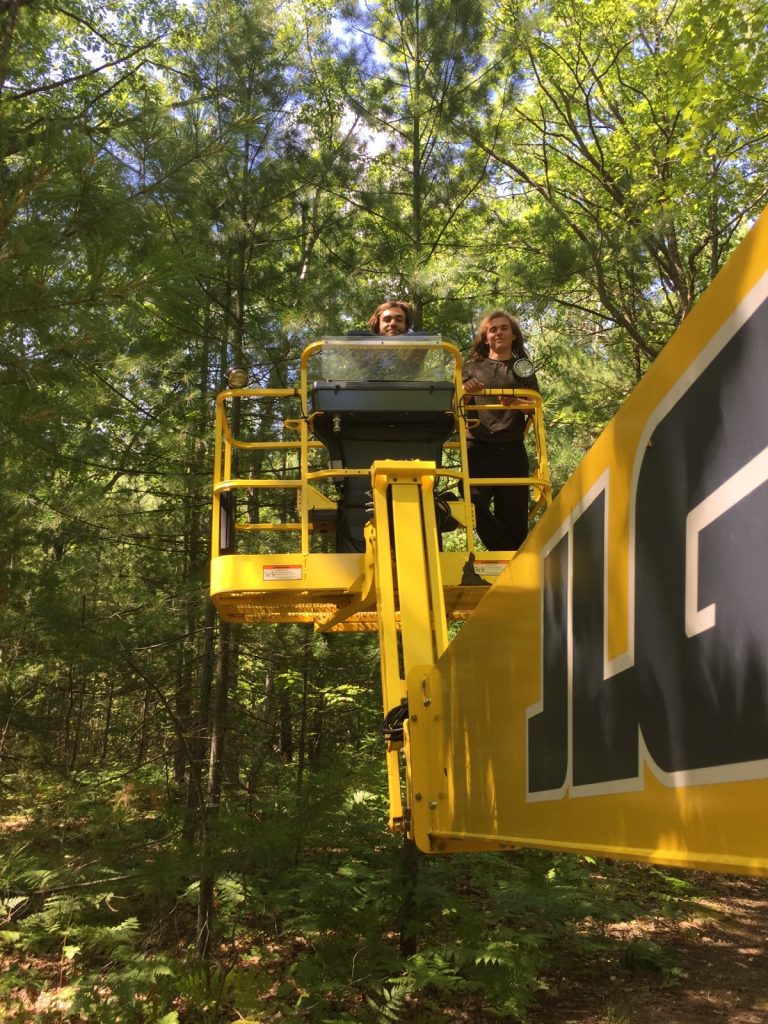
Austin (right) and Rio (left) use the zero emissions canopy access lift to measure hydraulic traits of leaves at the top of the forest canopy at UMBS .(July, 2018)
Two Matheny Lab students win fellowships to support summer research at the University of Michigan Biological Station
Austin Rechner (graduate) has been awarded the Dr. Ralph E. Bennett Endowment Fund to study changes in the hysteretic pattern between vapor pressure deficit and sap flow with respect to changes in local weather patterns in northern Michigan. Rio Mursinna (undergraduate) has been accepted to the Climate Change in the Great Lakes Region NSF Research Experience for Undergraduates (REU) program to analyze the influence of plant hydraulic strategies on species-specific water use during dry interstorm periods. Austin and Rio will both live at the University of Michigan Biological Station (UMBS) near Pellston, Michigan from June-August to conduct field research in order to answer their research questions.
The calibration and use of capacitance sensors to monitor stem water content in trees
by Ashley Matheny, Steve Garrity and Gil Bohrer
Water transport and storage through the soil-plant-atmosphere continuum is critical to the terrestrial water cycle, and has become a major research focus area. Biomass capacitance plays an integral role in the avoidance of hydraulic impairment to transpiration. However, high temporal resolution measurements of dynamic changes in the hydraulic capacitance of large trees are rare. We present procedures for the calibration and use of capacitance sensors, typically used to monitor soil water content, to measure the volumetric water content in trees in the field. We demonstrate that volumetric water content dynamics observed via the presented methodology align with sap flow measurements recorded using thermal dissipation techniques and environmental forcing data. Biomass water content data can be used to observe drought response and recovery, and has the potential to be applied to the calibration and evaluation of new plant-level hydrodynamics models as well as to the partitioning of remotely sensed moisture products into above- and belowground components.




